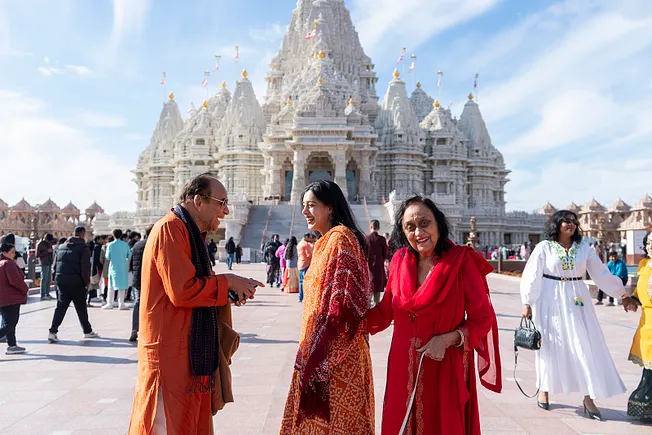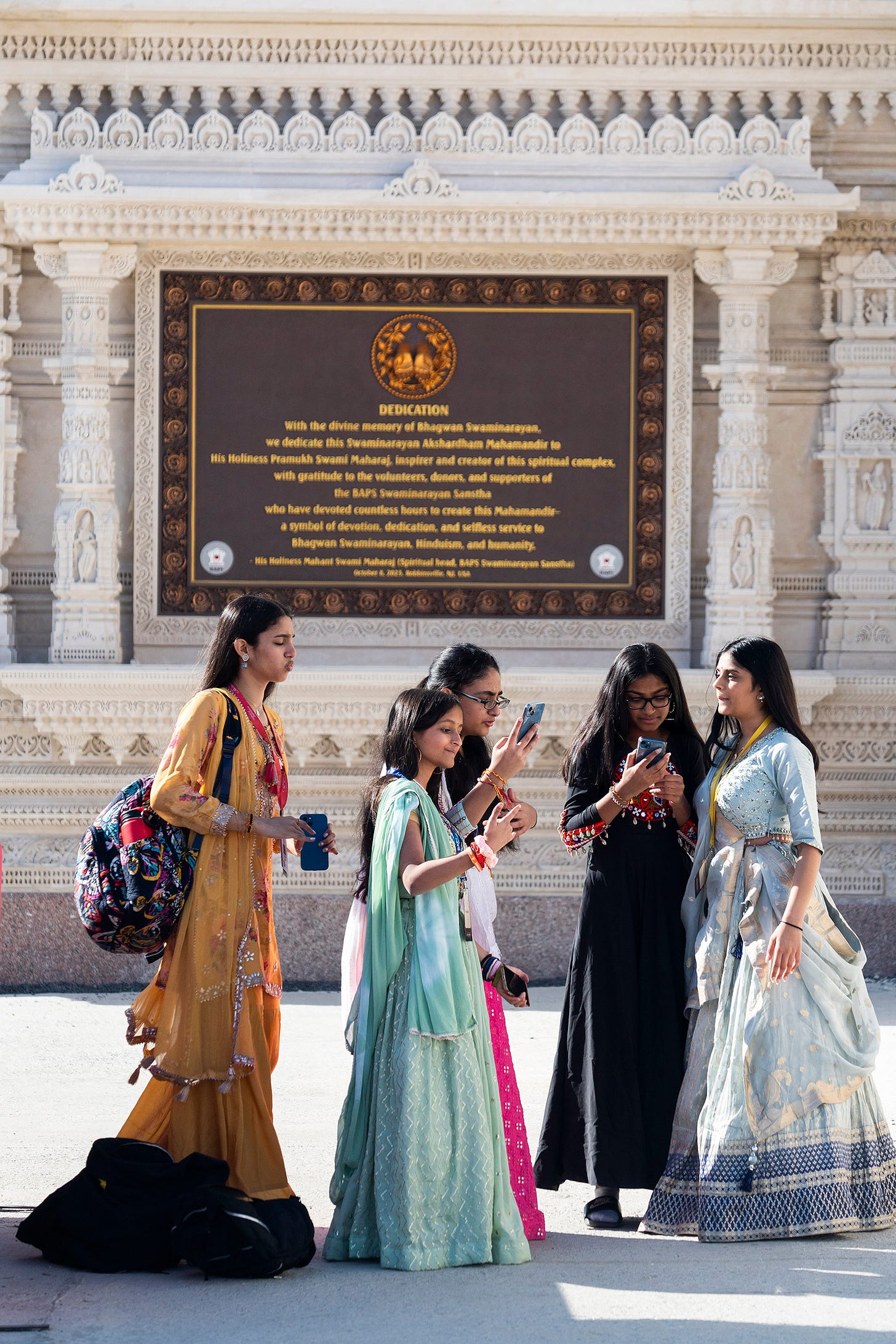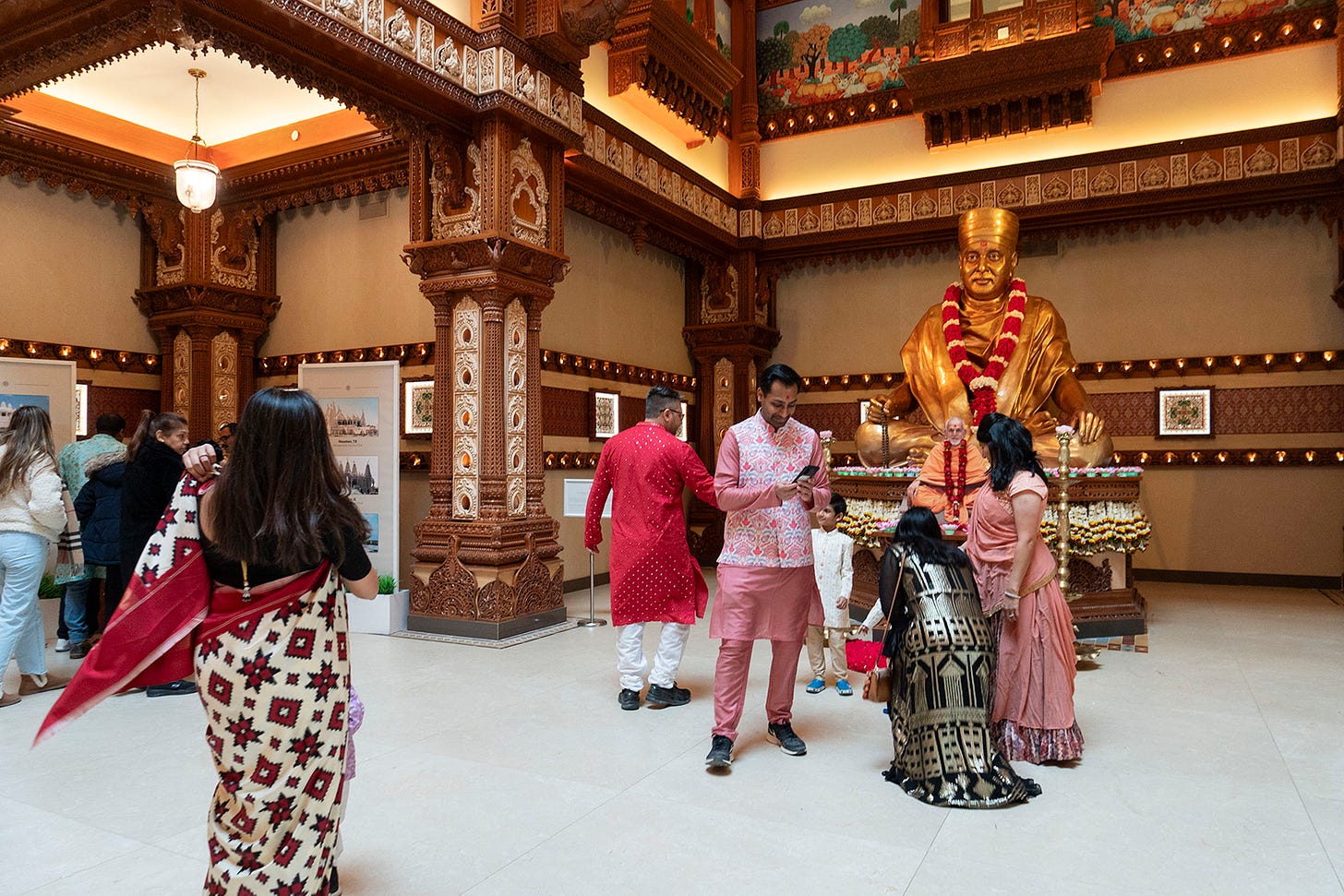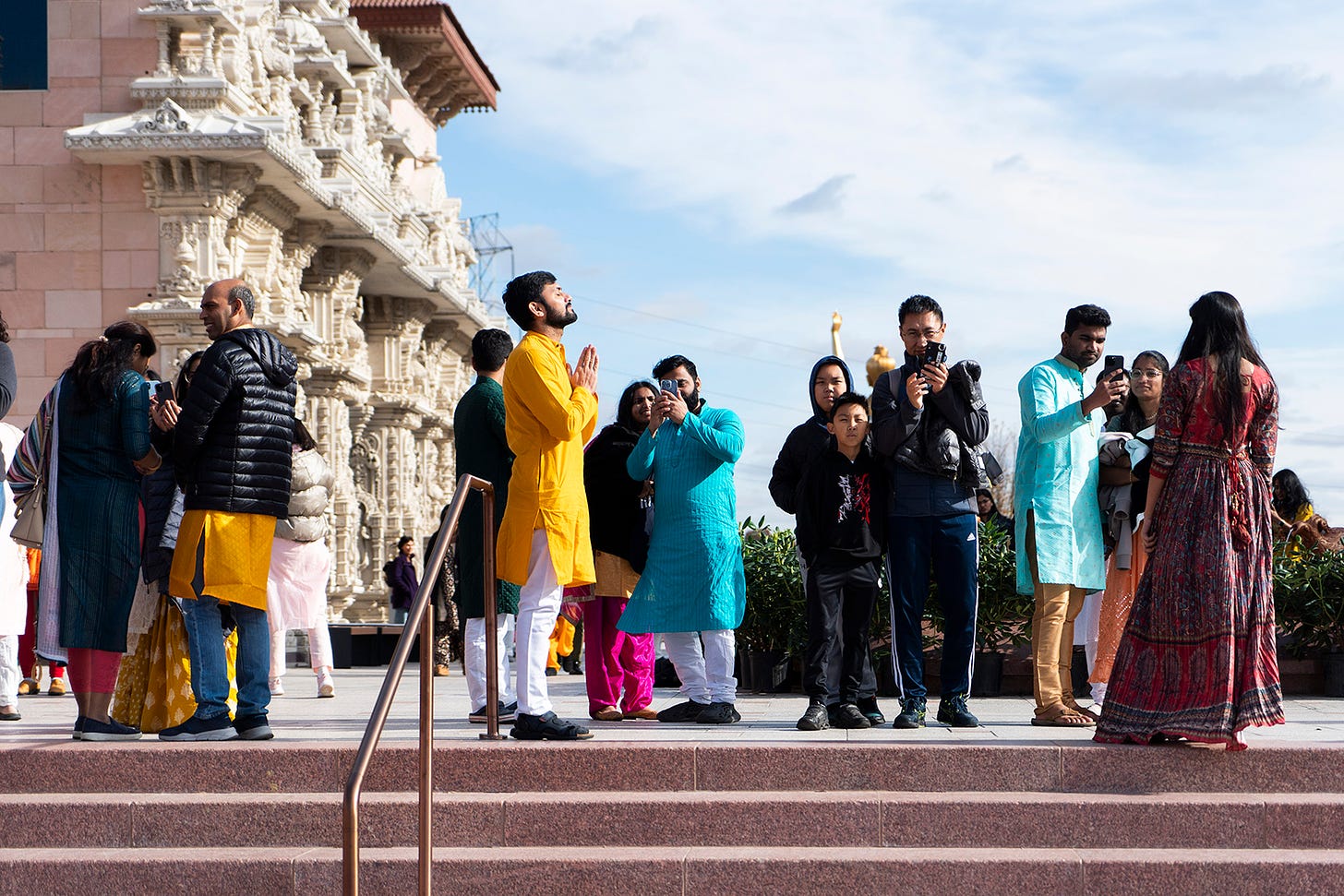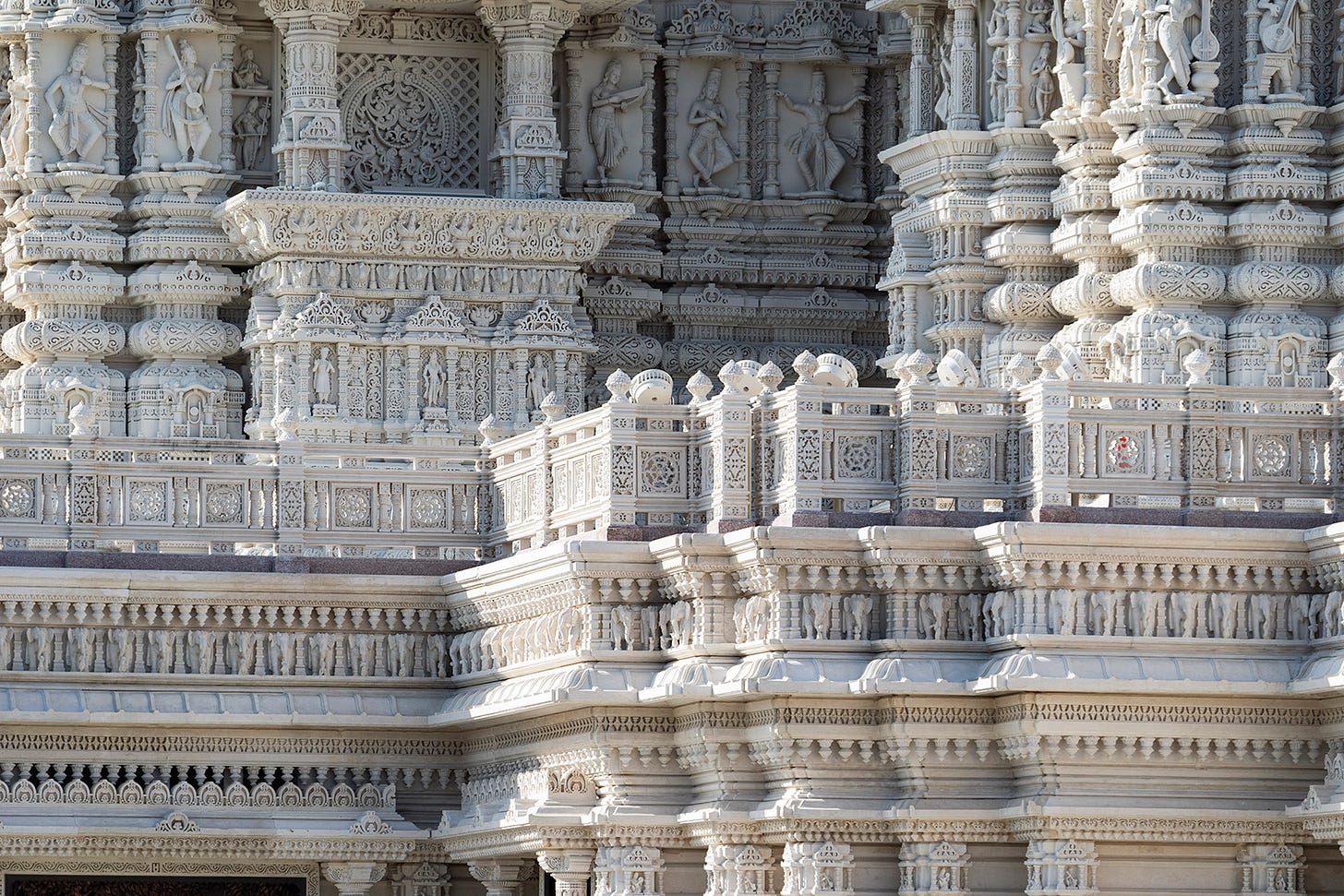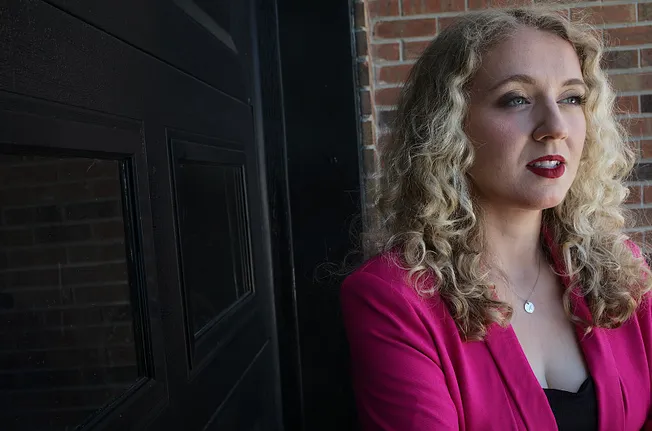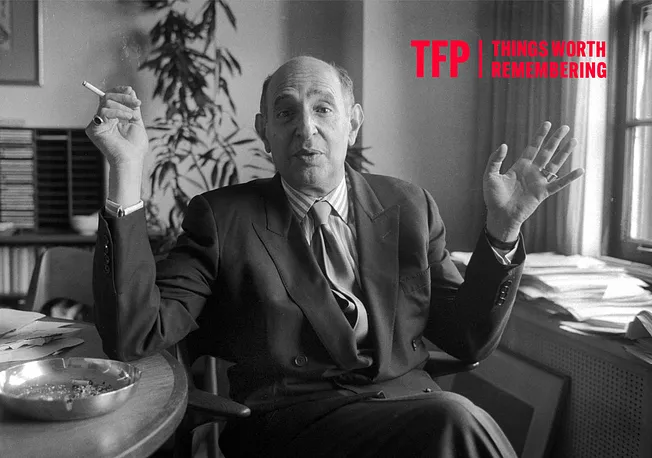Recently, on the day of Diwali, I walked barefoot with my grandparents into the largest Hindu temple outside of Asia.
The BAPS Shri Swaminarayan Mandir—set on a 180-acre lot in Robbinsville, New Jersey—opened about a month ago. It’s made of more than 1.9 million cubic feet of off-white stone, and its spire rises 191 feet. It’s stunning.
There are a little more than 3 million Hindus and roughly 200 Hindu temples across the country stretching back at least three or four decades, but none were anything like this temple. As we walked around it, my grandfather ran his hand along the marble pillars, unaware of the women holding “Do not touch” signs.
In Robbinsville, it was a mixed crowd: Indians, non-Indians, people I met who were Hindu-adjacent or had no interest in Hinduism per se but thought the temple was beautiful. It felt Versailles touristy. It was a moment. Lots of families. Lots of selfies.
Most of the people at the temple were there for the same reason my Nani and Nana and I were there—because they were amazed by it, because it’s beautiful.
“This is America,” Ajay, who I met while strolling around the temple grounds, told me. “I’m proud to be American. I’m also proud to be a part of one of the world’s oldest civilizations.”
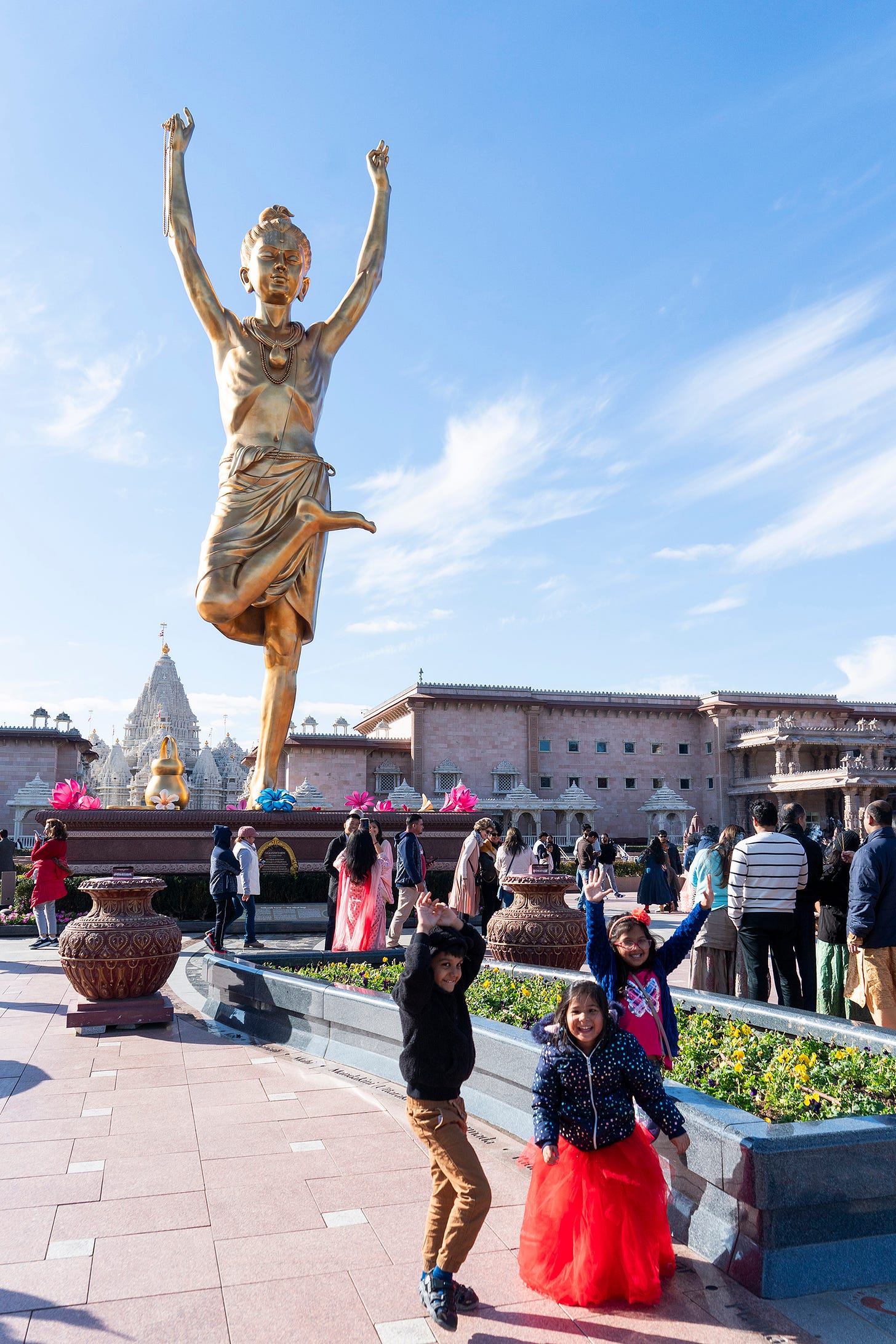
America was built by people who left everything behind in search of religious freedom, who constructed that life for themselves without the promise of a financial reward. The Pilgrims who came here four centuries ago probably did not have a Hindu temple in New Jersey in mind when they were crossing the Atlantic in search of religious freedom in the New World, but the temple is borne of the same yearning, the same freedom, that we commemorate every Thanksgiving.
Still, there was an irony to all this. One of the things that has enabled Hinduism to soldier on, to push through the many ages and millennia and kingdoms and upheavals, is that unlike the major monotheistic religions, it has never put a premium on place. We don’t need temples—or any buildings, really—in which to practice our faith.
“We don’t make a pilgrimage to the temple out of necessity,” my Nana, or grandfather, said. “You can pray to the window. You can pray to the rain.”
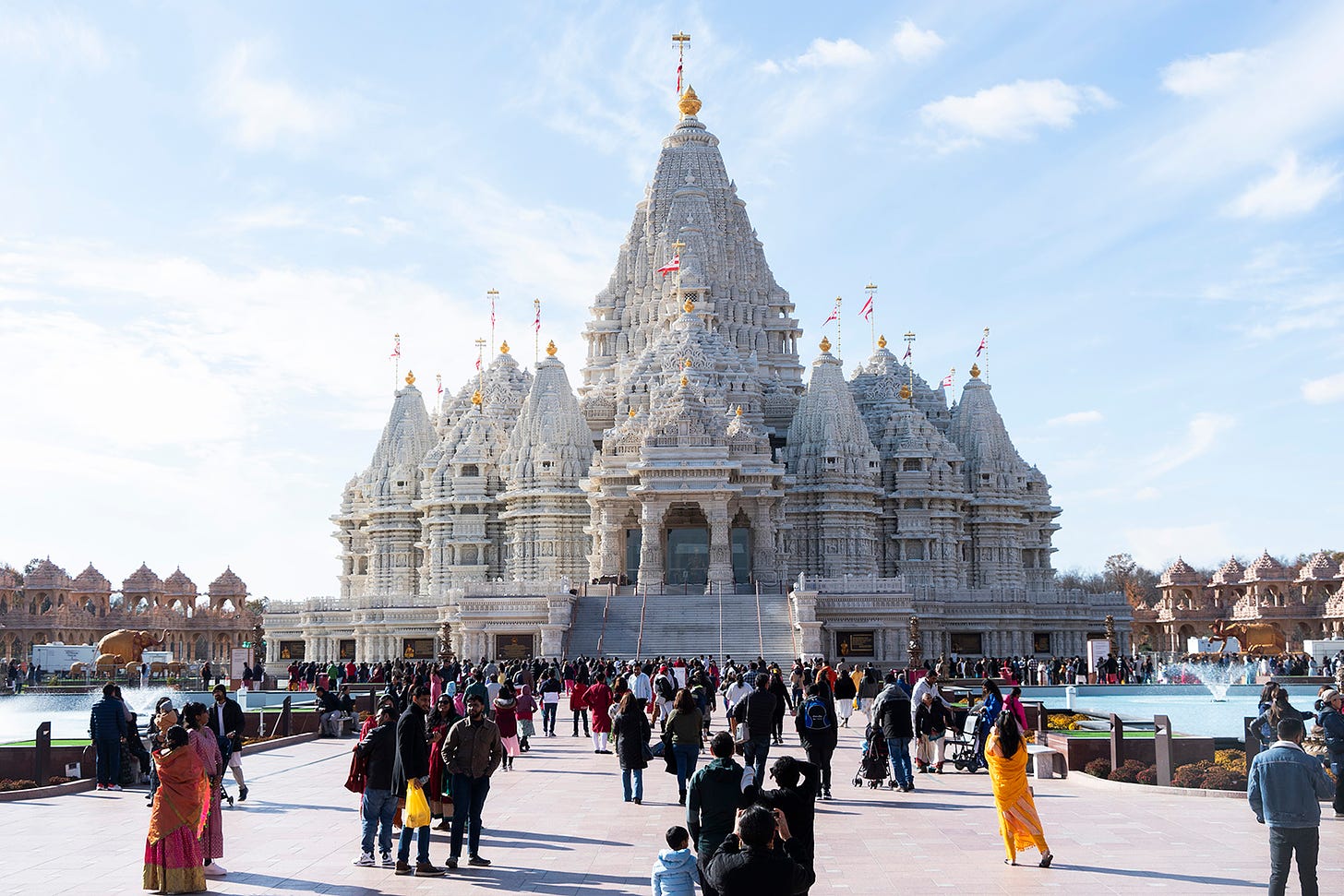
When the Mughals came to India from the north in the sixteenth century, they destroyed the temples and built mosques in their place. When the Portuguese Christians came from the west, they also destroyed Hindu temples. But that did little, if anything, to stop the practice of Hinduism.
The temple, the mandir, is a designated place for concentrating on the divine. But it’s not the only place.
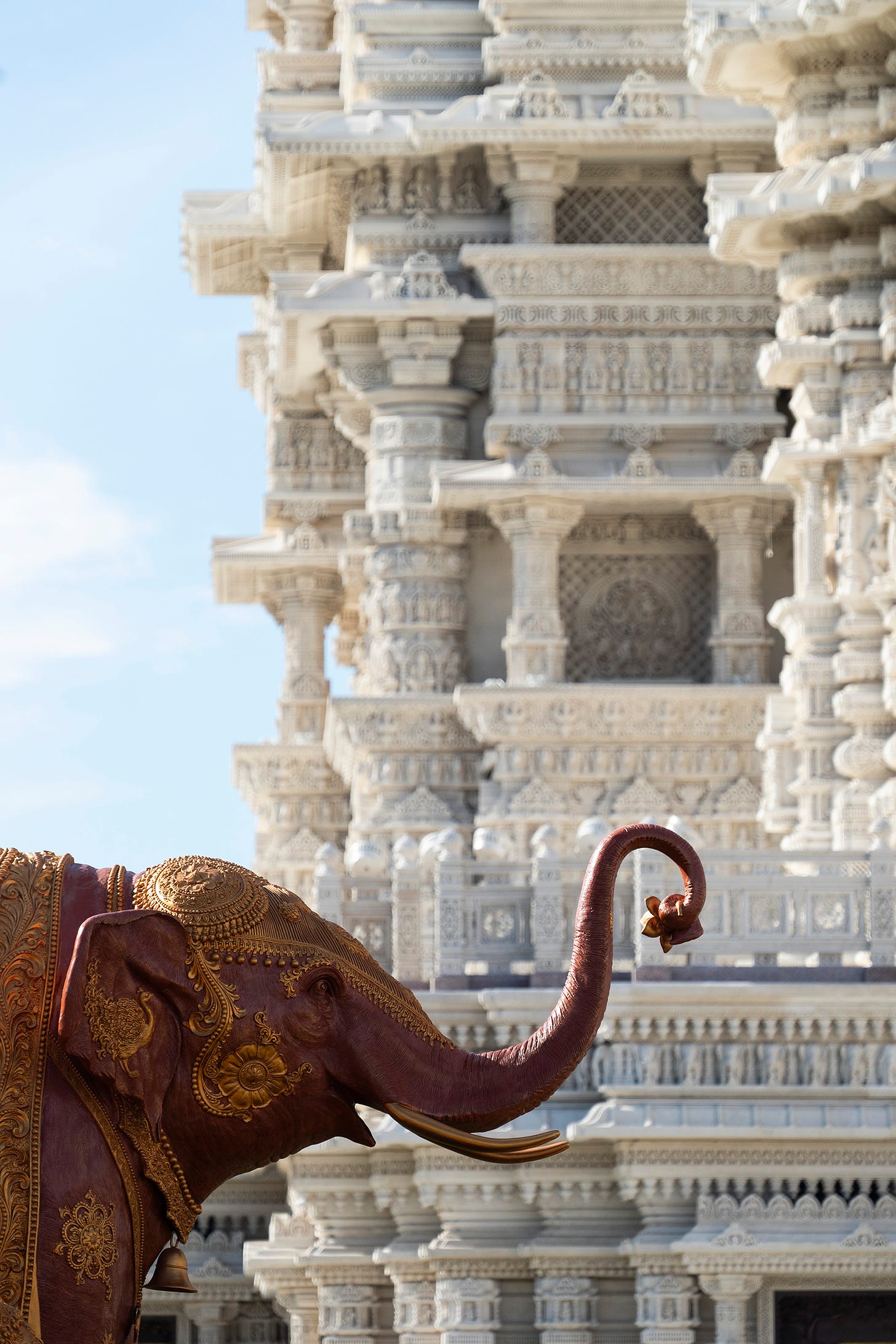
In my parents’ bedroom in Providence, Rhode Island, the mandir is a brown marble dresser with a floral pattern. It opens to an altar. There sits a statue of Krishna, the envelope of my younger brother’s report card from 2007, a pamphlet for the funeral service of a family friend.
In my apartment in New York, the mandir is the third shelf of my bookcase. On the shelf there’s a silver-framed photo of my brothers, a mason jar of dried lavender, and a journal I write in whenever something special happens. I wrote in it on Diwali.
When my grandparents, both doctors, immigrated to New York City’s Lower East Side from Ajmer, in the northern Indian state of Rajasthan, in 1973 with my mother, who was six, and her sister, who was two, there was no community mandir in Lower Manhattan.
At Christmas, they’d go to St. Patrick’s Cathedral, on Fifth Avenue. “It was very nicely decorated and beautiful,” Nani said. “Being Hindu, we go to other religions also.”
In college, in the ’80s, my mom met my dad, who knew all about Shakespeare and pop culture and nothing about the religion he’d been born into.
They moved to Rhode Island in 1999, six months before I was born. In Rhode Island, neither Hinduism nor Indian culture was particularly glamorous. The temples my family occasionally visited were adjacent to suburban strip malls, fluorescently lit, with posters of gods and goddesses Scotch-taped to the wall. There was a warmth to those spaces, burning incense at the small altars, but I complained, looking at stains on the carpet, when we had to take off our shoes.
I remember visiting the religious centers of each of the five major world religions on a field trip in middle school. The Protestant and Catholic churches in Providence, at home in the colonial landscape, had their stained glass windows. Temple Emanuel had a gold dome. When the school bus arrived at the Hindu temple, I was slightly embarrassed by how unimpressive it was. I wished my class could see the temples I had seen on family trips to South India and at the foothills of the Himalayas, some made of pure limestone, others foiled in a gold that glows in the moonlight.
Even before it opened, the temple in Robbinsville, New Jersey, was draped in controversy: it took 13,000 laborers from around the world 12 years to build it at a cost of $96 million, and it would have cost even more had many workers not worked for free.
In May of 2021, a lawsuit accusing the sect behind the temple of human trafficking and exploitation of its workers prompted FBI agents to raid the temple grounds. But this past July, the suit was put on indefinite hold after several workers came forward to say they had never been mistreated, and that lawyers had, in fact, forced them into signing on to the suit.
Whatever the controversy, you can’t help but admire the feat of finally creating this sandcastle shrine, which might be the third biggest temple in the world, depending on which reports you read. (Pashupatinath, in Kathmandu, is the biggest; Angkor Wat, in Cambodia, appears to be the second.) Inside it, we gazed at the intricate, lacy patterns carved into stone. The marble figures wore marble garlands. Others clasped their hands in a marble prayer.
Then we exited. The elevator closed. And I found myself at a gift shop, the Akshardham Store, where they sell books, essential oils, aloe vera gummies, tea, costume jewelry, and a 500-piece puzzle of the temple. A woman with a Lululemon fanny pack inspected an electric incense burner. I bought a saffron bathing bar.
We got lunch at the temple food court, complete with a Panini & Pizza Parlor, a gelato stand, and an Indian street food station—samosas, mango lassis, that sort of thing.
“I cannot believe such a temple can be built today outside of India,” Nani said over lunch, touching my cheek and sipping her tomato soup.
Later, at home, we lit 31 candles. This is what we do on Diwali, so that light may always win over darkness. We sang as we carried them in clay trays, placing a light in each room, at the doorstep of my grandparents’ home, on the windowsills.
Then, we went outside into the cold November night and played with the sparklers, waving them in sacred patterns, until they went out.
Kiran Sampath is the editorial assistant at The Free Press. Her last piece was about the candidates at the fore of the Asian American right-wing revolt.
If you appreciate our reporting, from the Middle East to New Jersey, become a subscriber today:


